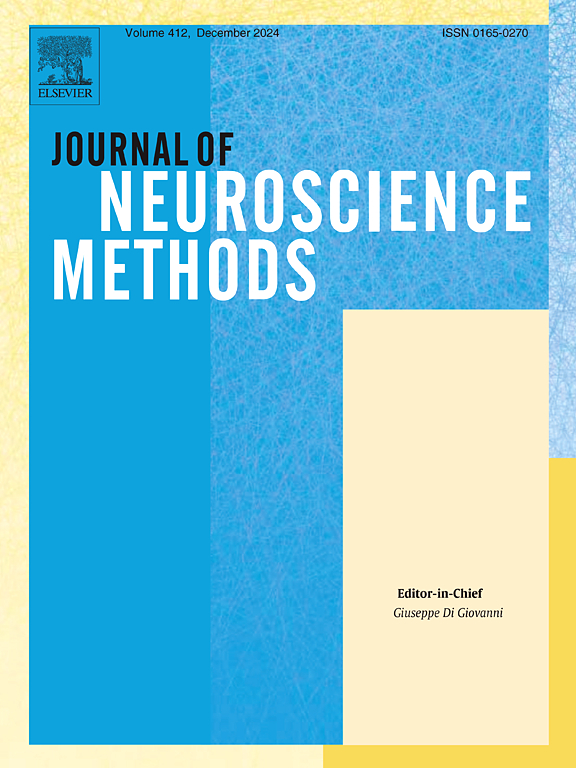μGlia-Flow, an automatic workflow for microglia segmentation and classification
IF 2.7
4区 医学
Q2 BIOCHEMICAL RESEARCH METHODS
引用次数: 0
Abstract
Background
Microglia are important immune cells in the central nervous system, playing a key role in various pathological processes. The morphological diversity of microglia is closely linked to the development of brain diseases, yet accurate segmentation and automatic classification of microglia remain challenging.
New method
We proposed a workflow, μGlia-Flow, which integrates both segmentation and classification for microglia analysis. The Frangi filtering algorithm was employed for branch segmentation, and an edge-guided attention TransUNet (EGA-Net) was used for soma segmentation. A Vision Transformer (ViT) network was applied to classify different morphologies.
Results
The Frangi filtering algorithm produces more complete branches with smoother edges and clearer structures. The EGA-Net improves Dice and IoU scores by 4.02 % and 6.75 %, respectively. ViT achieves over 99 % precision in classification. Post-processing reveals decreasing complexity during activation, validating the accuracy of μGlia-Flow.
Comparison with existing methods
μGlia-Flow introduces deep learning, significantly improving segmentation accuracy and addressing the parameter dependency of existing classification methods.
Conclusion
we present an automatic workflow for segmenting and classifying microglia, providing a powerful tool for different morphology analysis.
μGlia-Flow,一种用于小胶质细胞分割和分类的自动工作流
小胶质细胞是中枢神经系统中重要的免疫细胞,在多种病理过程中起关键作用。小胶质细胞的形态多样性与脑疾病的发展密切相关,但小胶质细胞的准确分割和自动分类仍然是一个挑战。我们提出了一种结合小胶质细胞分割和分类的工作流程μGlia-Flow。分支分割采用Frangi滤波算法,体分割采用边缘引导注意力TransUNet (EGA-Net)算法。采用视觉变压器(Vision Transformer, ViT)网络对不同的形态学进行分类。结果Frangi滤波算法生成的分支更完整,边缘更光滑,结构更清晰。EGA-Net使Dice和IoU得分分别提高了4.02 %和6.75 %。ViT在分类上达到了99% %以上的精度。后处理显示激活过程的复杂性降低,验证了μGlia-Flow的准确性。μ glia - flow引入深度学习,显著提高了分割精度,解决了现有分类方法的参数依赖问题。结论提出了一种小胶质细胞自动分割和分类的工作流程,为不同形态的分析提供了有力的工具。
本文章由计算机程序翻译,如有差异,请以英文原文为准。
求助全文
约1分钟内获得全文
求助全文
来源期刊

Journal of Neuroscience Methods
医学-神经科学
CiteScore
7.10
自引率
3.30%
发文量
226
审稿时长
52 days
期刊介绍:
The Journal of Neuroscience Methods publishes papers that describe new methods that are specifically for neuroscience research conducted in invertebrates, vertebrates or in man. Major methodological improvements or important refinements of established neuroscience methods are also considered for publication. The Journal''s Scope includes all aspects of contemporary neuroscience research, including anatomical, behavioural, biochemical, cellular, computational, molecular, invasive and non-invasive imaging, optogenetic, and physiological research investigations.
 求助内容:
求助内容: 应助结果提醒方式:
应助结果提醒方式:


